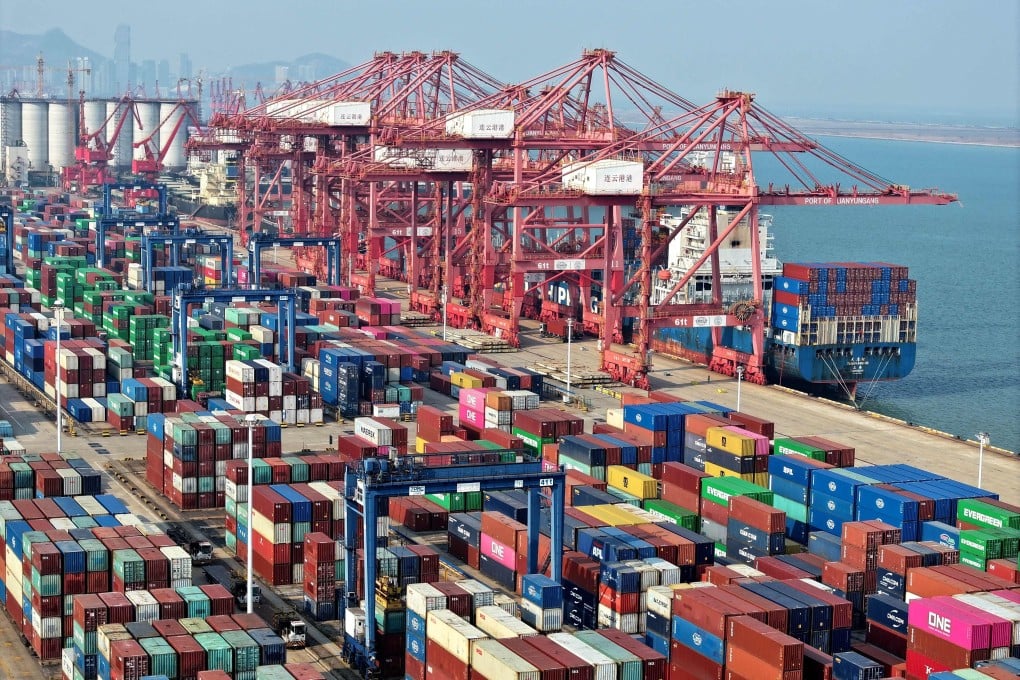China’s September Trade Data Surprises Markets as Exports Rebound and Imports Surge
China’s September Trade Data Surprises Markets as Exports Rebound and Imports Surge
By
Junia Wells
Last updated:
October 13, 2025
First Published:
November 30, 2025

Photo: South China Morning Post
Beijing — China’s exports accelerated in September, beating expectations, while imports rose at their fastest pace since April 2024, signaling a resilient trade performance even as tensions with the U.S. intensify.
Exports expanded 8.3% in U.S. dollar terms from a year earlier, surpassing economists’ forecasts of 7.1% and rebounding after August’s six-month low. Imports jumped 7.4% year-on-year, well above the anticipated 1.5% growth, marking the strongest monthly gain in over a year.
Trade With the U.S. Declines, Other Markets Surge
Exports to the U.S. fell 27% in September, while imports from the U.S. dropped 16%, continuing a pattern of double-digit declines since April. As a result, China’s trade surplus with the U.S. over the first nine months narrowed to $208.6 billion, compared to $258 billion during the same period last year.
However, this slowdown in U.S.-bound shipments was offset by sharp increases in other regions. Exports to ASEAN countries surged 15.6%, to the European Union 10.4%, and to Africa a remarkable 56.4%, reflecting China’s growing focus on diversified trade partners amid geopolitical uncertainties.
Rare Earth Exports and Strategic Controls
China’s rare earth exports fell 30% month-on-month to 4,000 tons, as Beijing tightened restrictions on five new critical minerals and increased scrutiny for foreign firms seeking access. Analysts warn these measures could impact global chipmakers, including Nvidia, TSMC, and Intel, which now need licenses to sell semiconductors internationally.
Meanwhile, Chinese soybean imports climbed 13% year-on-year in September, though details of sourcing remain unclear. The reluctance to resume large-scale U.S. purchases underscores ongoing trade frictions.
Rising Tensions With the U.S.
Trade relations have deteriorated in recent days, with U.S. President Donald Trump threatening 100% additional tariffs on Chinese exports and stricter controls on critical software. In response, Beijing has expanded its “unreliable entities” blacklist to include the chip consulting firm TechInsights and opened a fresh antitrust investigation into Qualcomm.
Gabriel Wildau, managing director at political risks advisory Teneo, warned that combined tariffs could push levies above 150%, effectively creating a trade blockade and prompting tit-for-tat measures from China. Both countries have also threatened port fees on each other’s ships, effective Oct. 14.
China Customs spokesperson Lyu Daliang urged Washington to return to dialogue, emphasizing that new tariffs imposed this year are disrupting global trade. Commerce Ministry officials highlighted that stabilizing trade in the fourth quarter will be challenging due to the high base effect from last year and complex external pressures.
Economic Implications and Global Diversification
The surge in imports, after months of weak demand linked to the housing slowdown and reduced stimulus, hints at improving domestic activity. Total domestic tourism during the eight-day holiday ending Oct. 8 generated $113.6 billion in revenue, up 7.6% from last year, though average spending per trip remains below pre-pandemic levels.
Analysts expect ongoing deflationary pressure in September, with the producer price index likely falling 2.3% and consumer prices dipping 0.1% year-on-year.
Taimur Baig, chief economist at DBS Bank, noted that China may deepen trade relationships with non-U.S. markets, creating a more favorable export environment for global partners in the coming years.
Popular articles
Subscribe to unlock premium content
Gourmet Gold: Micro-Venture Funds and Europe’s Artisan Food Revolution

Artificial Elegance in Fashion

Ferrari’s Craft of Desire

Gourmet Gold: Micro-Venture Funds and Europe’s Artisan Food Revolution

Artificial Elegance in Fashion

Gourmet Gold: Micro-Venture Funds and Europe’s Artisan Food Revolution









